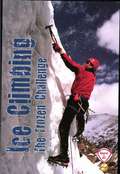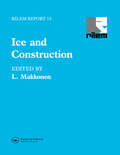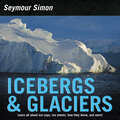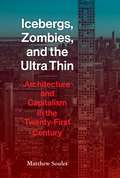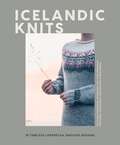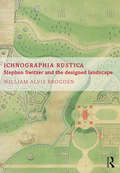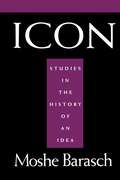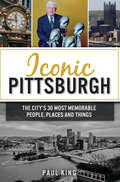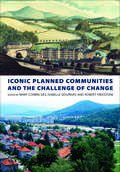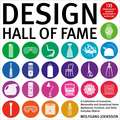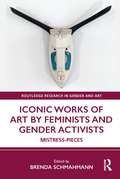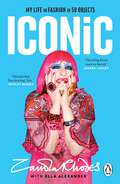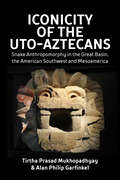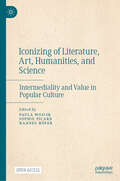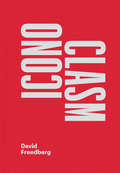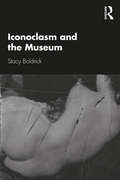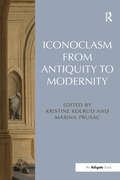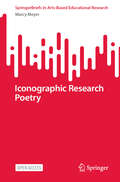- Table View
- List View
Ice Climbing: The Frozen Challenge (Fountas & Pinnell LLI Gold #Level Q)
by Bob Morrow<p>Extreme Photography <p>People don't normally think of photography as an extreme sport. But many nature photographers take up extreme sports, like ice climbing, in order to capture amazing shots. <p>Imagine breathing thin mountain air, clinging to the ice with one hand and snapping a picture with the other. Photographers often take great risks to share the beauty of the mountains and ice with those on the ground. When reading this book, take a few minutes to examine the photographs. Notice the angle of each one, and imagine the story behind the photograph. What do you think the photographer needed to do to get each shot? <p>Text Elements: <p> <li>Genre: Nonfiction, Expository <li>Text Structures: Main: Categorical, Embedded: Description, Cause/Effect, Chronological Sequence <li>Text Features: table of contents, headings, photos, captions, pronunciation guides, maps, sidebars</li> </p>
Ice and Construction
by L. MakkonenThis book focuses on two areas of ice technology: the use of ice as a construction material and the problems caused by ice to constructions. In connection with describing past and potential future applications of using ice in construction, a detailed discussion on the mechanical properties of ice is given. A state of the art description on ice-maki
Icebergs & Glaciers
by Seymour SimonIn this updated and revised edition of Icebergs & Glaciers, award-winning science writer Seymour Simon gives readers an in-depth look at how icebergs and glaciers have shaped our rivers, mountains, and earth, as well as the effect climate change is having on them and our planet. This nonfiction picture book is an excellent choice to share during homeschooling, in particular for children ages 6 to 8. It’s a fun way to learn to read and as a supplement for activity books for children.With fascinating facts and breathtaking full-color photographs, readers will learn all about how these huge masses of ice are formed, how they move, and why they are essential to our planet.This updated edition includes:author’s notestunning full-color photographsglossaryindexa list of websites and additional reading sourcesSupports the Common Core Learning Standards, Next Generation Science Standards and the Science, Technology, Engineering, and Math (STEM) standards.
Icebergs, Zombies, and the Ultra-Thin: Architecture and Capitalism in the 21st Century
by Matthew Soules"Soules's excellent book makes sense of the capitalist forces we all feel but cannot always name… Icebergs, Zombies, and the Ultra Thin arms architects and the general public with an essential understanding of how capitalism makes property. Required reading for those who think tomorrow can be different from today."— Jack Self, coeditor of Real Estates: Life Without DebtIn Icebergs, Zombies, and the Ultra Thin, Matthew Soules issues an indictment of how finance capitalism dramatically alters not only architectural forms but also the very nature of our cities and societies. We rarely consider architecture to be an important factor in contemporary economic and political debates, yet sparsely occupied ultra-thin "pencil towers" develop in our cities, functioning as speculative wealth storage for the superrich, and cavernous "iceberg" homes extend architectural assets many stories below street level. Meanwhile, communities around the globe are blighted by zombie and ghost urbanism, marked by unoccupied neighborhoods and abandoned housing developments.Learn how the use of architecture as an investment tool has accelerated in recent years, heightening inequality and contributing to worldwide financial instability:• See how investment imperatives shape what and how we build, changing the very structure of our communities• Delve into high-profile projects, like the luxury apartments of architect Rafael Viñoly's 432 Park Avenue• Understand the convergence of technology, finance, and spirituality, which together are configuring the financialized walls within which we eat, sleep, and workIncludes dozens of photos and drawings of architectural phenomena that have changed the way we live. Essential reading for anyone interested in architecture, design, economics, and understanding the way our world is formed.
Icehouses
by Tim BuxbaumIn the days before refrigeration, the very wealthy would use specially designed icehouses to store food from one season to the next. This book examines the design and development of icehouses, using many illustrations to explain how they worked and how they improved as scientific knowledge increased. With a detailed description of the different uses of icehouses, as well as examples of some of the most elaborately decorative structures, this book provides a rare insight into an intriguing subject.
Icelandic Knits: 18 Timeless Lopapeysa Sweater Designs
by Annika Konttaniemi Pirjo Iivonen Tiina Kaarela Niina LaitinenIcelandic patternwork has always been popular in the knitting world and now so more than ever!Icelandic Knits features 8 trending Finnish knitwear designers and featuring their own interpretations of the famous lopapeysa jumper. The designs include a mix of the more traditional as well as some designs with a modern twist, such as addition of a hood or creating a cardigan instead of a jumper. There are also instructions for hand-dyeing the yarn to personalise your look.Including a collection of 18 sweater designs for women, men and children. The instructions are presented with clear diagrams and stunning photographs showcasing the stunning landscapes of Lapland that will make you yearn for the cosy jumpers and Nordic Noir.
Ichnographia Rustica: Stephen Switzer and the designed landscape
by William Alvis BrogdenOne of the most significant occurrences in the history of design was the creation of the English Landscape Garden. Accounts of its genesis…the surprising structural change from the formal to a seeming informal are numerous. But none has ever been quite convincing and none satisfactorily placed the contributions of Stephen Switzer. Unlike his contemporaries, Switzer - an 18th century author of books on gardening and agricultural improvement - grasped a quite new principle: that the fashionable pursuit of great gardens should be "rural and extensive", rather than merely the ornamentation of a particular part of an estate. Switzer saw that a whole estate could be enjoyed as an aesthetic experience, and by the process of improving its value, could increase wealth. By encouraging improvers to see the garden in his enlarged sense, he opened up the adjoining countryside, the landscape, and made the whole a subject of unified design. Some few followed his advice immediately, such as Bathurst at Cirencester. But it took some time for his ideas to become generally accepted. Could this vision, and its working out in practice between 1710 and 1740 be the very reason for such changes? 300 years after the first volume of his writings began to be published; this book offers a timely critical examination of lessons learned and Switzer’s roles. In major influential early works at Castle Howard and Blenheim, and later the more "minor" works such as Spy Park, Leeswood or Rhual, the relationships between these designs and his writings is demonstrated. In doing so, it makes possible major reassessment of the developments, and thus our attitudes to well-known works. It provides an explanation of how he, and his colleagues and contemporaries first made what he had called Ichnographia Rustica, or more familiarly Modern Gardening from the mid-1740s, land later landscape gardens. It reveals an exceptional innovator, who by transforming the philosophical way in which nature was viewed, integrated good design with good farming and horticultural practice for the first time. It raises the issue of the cleavage in thought of the later 18th century, essentially whether the ferme ornee as the mixture of utile and dulci was the perfect designed landscape, or whether this was the enlarged garden with features of "unadorned nature"? The book discusses these considerable and continuing contrary influences on later work, and suggests Switzer has many lessons for how contemporary landscape and garden design ought be perceived and practised.
Icon: Studies in the History of An Idea
by Moshe Barasch Luci SerranoOver the centuries, European debate about the nature and status of images of God and sacred figures has often upset the established order and shaken societies to their core. Out of this debate, an identifiable doctrine has emerged of the image in general and of the divine image in particular. This fascinating work concentrates on these historical arguments, from the period of Late Antiquity up to the great and classic defenses of images by St. John of Damascus and Theodore of Studion. Icon extends beyond the immediate concerns of religion, philosophy, aesthetics, history, and art, to engage them all.
Iconic Pittsburgh: The City's 30 Most Memorable People, Places and Things
by Paul KingThe Steel City has boasted some of the most famous figures, landmarks and innovations in the country's history. Pittsburgh's past is littered with dozens of fascinating stories behind the icons that define it. Mary Schenley was the city's biggest benefactress of the nineteenth century, gifting the site of the 425-acre park in her name, but her fortune was almost lost when she eloped at the age of fifteen. The first ever call-in radio talk show began at famed KDKA in 1951, inspiring the birth of an entire industry. Mount Washington offers tourists sweeping views of the city today, but it once supplied coal to Pittsburghers and was the site of a sixteen-year underground mine fire. Author Paul King lists the best people, places and things of Pittsburgh's grand history.
Iconic Planned Communities and the Challenge of Change (The City in the Twenty-First Century)
by Robert Freestone Mary Corbin Sies Isabelle GournayIn the history of planning, the design of an entire community prior to its construction is among the oldest traditions. Iconic Planned Communities and the Challenge of Change explores the twenty-first-century fortunes of planned communities around the world. Drawing on interdisciplinary perspectives, the editors and contributors examine what happened to planned communities after their glory days had passed and they became vulnerable to pressures of growth, change, and even decline.Beginning with Robert Owen's industrial village in Scotland and concluding with Robert Davis's neotraditional resort haven in Florida, this book documents the effort to translate optimal design into sustaining a common life that works for changing circumstances and new generations of residents. Basing their approach on historical research and practical, on-the-ground considerations, the essayists argue that preservation efforts succeed best when they build upon foundational planning principles, address landscape, architecture, and social engineering together, and respect the spirit of place.Presenting twenty-three case studies located in six continents, each contributor considers how to preserve the spirit of the community and its key design elements, and the ways in which those elements can be adapted to contemporary circumstances and changing demographics. Iconic Planned Communities and the Challenge of Change espouses strategies to achieve critical resilience and emphasizes the vital connection between heritage preservation, equitable sharing of the benefits of living in these carefully designed places, and sustainable development.Communities: Bat'ovany-Partizánske, Cité Frugès, Colonel Light Gardens, Den-en Chôfu, Garbatella, Greenbelt, Hampstead Garden Suburb, Jardim América, Letchworth Garden City, Menteng, New Lanark, Pacaembú, Radburn, Riverside, Römerstadt, Sabaudia, Seaside, Soweto, Sunnyside Gardens, Tapiola, The Uplands, Welwyn Garden City, Wythenshawe.Contributors: Arnold R. Alanen, Carlos Roberto Monteiro de Andrade, Sandra Annunziata, Robert Freestone, Christine Garnaut, Isabelle Gournay, Michael Hebbert, Susan R. Henderson, James Hopkins, Steven W. Hurtt, Alena Kubova-Gauché, Jean-François Lejeune, Maria Cristina a Silva Leme, Larry McCann, Mervyn Miller, John Minnery, Angel David Nieves, John J. Pittari, Jr., Gilles Ragot, David Schuyler, Mary Corbin Sies, Christopher Silver, André Sorensen, R. Bruce Stephenson, Shun-ichi J. Watanabe.
Iconic Product Design: An Illustrated History of the World's Most Innovative Devices
by Wolfgang JoenssonYou will undoubtedly recognize quite a few of the products featured in this book—the Coca-Cola bottle, the Wester & Co pocket knife, the Kitchen Aid mixer, the Le Creuset Dutch oven, the Weber grill, the Bic cristal pen, the Rolodex address file, Kikkoman soy sauce bottles, the Kodak Instamatic, the Polaroid SX-70, the SONY Walkman, the Apple MacIntosh, and the Dyson air-multiplier. Maybe they were part of your childhood or represent your ideal in design; certainly, they will evoke a sense of the familiar. Iconic Product Design is an engaging and accessible presentation of the history of product design, providing an extensive catalog of the most memorable product designs of the past 150 years. More than 130 remarkable product designs from all areas, including household appliances, everyday objects, furniture, entertainment technology and office equipment, are presented in this collection. Accompanying the images are well-researched and charming vignettes about each product, with amusing insights and fun tidbits of information about its time and place. Each one informs how design has been influenced by changes in technology, science, and society. While these products were considered innovative at their inception, all have withstood the test of time and many are still, remarkably, in use today. Iconic Product Design is a comprehensive collection of iconic product design objects, chronologically organized from the beginning of the Industrial Revolution to the present. Each spread of this richly illustrated book showcases the author&’s representation of the chosen design, expressing its essence and capturing its spirit. In the introductory text, he shares his concept of the term iconicity to help the reader understand what makes these products stand out and why they are considered icons today.
Iconic Restaurants of Ann Arbor (Images Of America Ser.)
by Jon Milan Gail Offen Ari WeinzweigWhat is an iconic Ann Arbor restaurant? Ask anyone who has ever spent time there as a student, traveler, or “townie,” and they are likely to name several favorites in an instant. From debating the best place to celebrate or console on football Saturdays to deciding where to eat after the bars close, the choices have always sparked passionate conversation. In Ann Arbor, people are known to have strong feelings about the best places for pizza, coffee, beer, burgers, noodles, and burritos. Although many of the go-to hangouts are long gone, a surprising number still thrive. And there are always a few newcomers coming along to win the hearts of the next generation of diners, nibblers, and noshers. Some are fine restaurants and taverns, and others are lunch counters, diners, carry-outs, and drive-ins—but in each and every case, they are unique and together make up a collection of iconic local eateries.
Iconic Restaurants of Columbia, Missouri (American Palate)
by Kerri LinderColumbia's culinary history is chock-full of restaurants that not only satisfied appetites but also provided gathering places to build community. Gentry's Tavern served wild game along the Boonslick Trail. Hungry and broke students could grab a meal on credit from Ralph Morris at the Ever Eat Café during the Depression. During and after World War II, Ambrose's Café required students to give up their seats to men in uniform. Segregation didn't stop Annie Fisher from making her fortune serving her famous beaten biscuits. These stories and more are as rich as the cinnamon rolls served at Breischs. Join Columbia native Kerri Linder as she shares the stories and memories wrapped around the food of Columbia's iconic restaurants.
Iconic Works of Art by Feminists and Gender Activists: Mistress-Pieces (Routledge Research in Gender and Art)
by Brenda SchmahmannIn this book, contributors identify and explore a range of iconic works – "Mistress-Pieces" – that have been made by feminists and gender activists since the 1970s. The first volume for which the defining of iconic feminist art is the raison d’être, its contributors interpret a "Mistress-Piece" as a work that has proved influential in a particular context because of its distinctiveness and relevance. Reinterpreting iconic art by Alice Neel, Hannah Wilke and Ana Mendieta, the authors also offer important insights about works that may be less well known – those by Natalia LL, Tanja Ostojić, Swoon, Clara Menéres, Diane Victor, Usha Seejarim, Ilse Fusková, Phaptawan Suwannakudt and Tracey Moffatt, among others. While in some instances revealing cross influences between artists working in different frameworks, the publication simultaneously makes evident how social and political factors specific to particular countries had significant impact on the making and reception of art focused on gender. The book will be of interest to scholars working in art history, visual studies and gender studies.
Iconic Works of Art by Feminists and Gender Activists: Mistress-Pieces (Routledge Research in Gender and Art)
by Brenda SchmahmannIn this book, contributors identify and explore a range of iconic works – "Mistress-Pieces" – that have been made by feminists and gender activists since the 1970s. The first volume for which the defining of iconic feminist art is the raison d’être, its contributors interpret a "Mistress-Piece" as a work that has proved influential in a particular context because of its distinctiveness and relevance.Reinterpreting iconic art by Alice Neel, Hannah Wilke and Ana Mendieta, the authors also offer important insights about works that may be less well known – those by Natalia LL, Tanja Ostojić, Swoon, Clara Menéres, Diane Victor, Usha Seejarim, Ilse Fusková, Phaptawan Suwannakudt □and Tracey Moffatt, among others. While in some instances revealing cross influences between artists working in different frameworks, the publication simultaneously makes evident how social and political factors specific to particular countries had significant impact on the making and reception of art focused on gender.The book will be of interest to scholars working in art history, visual studies and gender studies.
Iconic: The vibrant new autobiography from the legendary British fashion designer who dressed everyone from rockstars to royalty
by Zandra Rhodes Ella Alexander'A vivid and compelling picture of the broader fashion landscape between 1960 and the present day. Anecdotes? The book is full of them.' The Times'Dazzling from start to finish.' Joanna LumleyIn this insightful memoir, Zandra shares her life story for the first time. Told through a variety of mementos collected over the years, it is a vibrant account filled with rockstars and royalty, of life-changing friendships and poignant reflections on her personal triumphs and tragedies, as well as the fears, sacrifices and pressures that come with being an era-defining designer.Full of poignant reflections and life lessons on achieving success while defying convention, Zandra recounts being inspired by her avant-garde mother to her time at the Royal College alongside David Hockney; from a road trip to Rome with Ossie Clark and Celia Birtwell, to opening her first London store thanks to a loan from Vanessa Redgrave with Joe Cocker singing With a Little Help From My Friends to the assembled crowd of London's 1960s fashion scene; from hanging out with Andy Warhol and Halston in New York's Studio 54 to lifelong friendships with legends such as Karl Lagerfeld and Diana Vreeland; from designing for everyone from Freddie Mercury to Diana Ross, Princess Diana to Barbra Streisand to founding the Fashion and Textile Museum.Capturing the rich and unexpected life of a British icon, this memoir explores what it is to defy the norm.‘Zandra Rhodes has changed the course of fashion history.' Suzy Menkes, fashion journalist
Iconicity of the Uto-Aztecans: Snake Anthropomorphy in the Great Basin, the American Southwest and Mesoamerica
by Tirtha Prasad Mukhopadhyay Alan Philip GarfinkelUto-Aztecan iconic practices are primarily conditioned by the consciousness of the snake as a death-dealing power, and as such, an animal that displays the deepest fears and anxieties of the individual. The attempt to study a snake simulacrum thus constitutes the basic objective of this volume. A long, all-embracing iconicity of snakes and related snake motifs are evident in different cultural expressions ranging from rock art templates to other cultural artifacts like basketry, pottery, temple architecture and sculptural motifs. Uto-Aztecan iconography demonstrates a symbolic memorial order of emotional valences, as well as the negotiations with death and a belief in rebirth, just as the skin shedding snake reptile manifests in its life cycle.
Iconicity of the Uto-Aztecans: Snake Anthropomorphy in the Great Basin, the American Southwest and Mesoamerica
by Tirtha Prasad Mukhopadhyay Alan Philip GarfinkelUto-Aztecan iconic practices are primarily conditioned by the consciousness of the snake as a death-dealing power, and as such, an animal that displays the deepest fears and anxieties of the individual. The attempt to study a snake simulacrum thus constitutes the basic objective of this volume. A long, all-embracing iconicity of snakes and related snake motifs are evident in different cultural expressions ranging from rock art templates to other cultural artifacts like basketry, pottery, temple architecture and sculptural motifs. Uto-Aztecan iconography demonstrates a symbolic memorial order of emotional valences, as well as the negotiations with death and a belief in rebirth, just as the skin-shedding snake reptile manifests in its life cycle.
Iconix: Exceptional Product Design
by Wolfgang JoenssonIconix is a comprehensive collection of iconic product design objects, chronologically organized from the beginning of the Industrial Revolution to the present. Each spread of this richly illustrated book showcases the author’s representation of the chosen design, expressing its essence and capturing its spirit. In the introductory text, he shares his concept of the term iconicity to help the reader understand what makes these products stand out and why they are considered icons today. More than one hundred remarkable product designs from all areas, including household appliances, everyday objects, furniture, entertainment technology and office equipment, are presented in this collection. Accompanying the images are well-researched and charming vignettes about each product, with amusing insights and fun tidbits of information about its time and place. Each one informs how design has been influenced by changes in technology, science, and society. While these products were considered innovative at their inception, all have withstood the test of time and many are still, remarkably, in use today. Whether you are drawn to this book because of an interest in design or a penchant for nostalgia and the objects that trigger memories—or both—you will undoubtedly recognize quite a few of these products, such as the Coca-Cola bottle, the Wester & Co pocket knife, the Kitchen Aid mixer, the Le Creuset Dutch oven, the Weber grill, the Bic cristal pen, the Rolodex address file, Kikkoman soy sauce bottles, the Kodak Instamatic, the Polaroid SX-70, the SONY Walkman, the Apple MacIntosh, and the Dyson air-multiplier. Maybe they were part of your childhood or represent your ideal in design; certainly, they will evoke a sense of the familiar. Iconix is an engaging and accessible presentation of the history of product design, providing an extensive catalog of the most memorable product designs of the past 150 years.
Iconizing of Literature, Art, Humanities, and Science: Intermediality and Value in Popular Culture
by Sophie Picard Paula Wojcik Hannes HöferWhy do people wear shirts with the Shakespeare quote &“to be or not be?&” or a portrait of philosopher Slavoj Žižek? How does popular and mass media adaptation and appropriation influence theoretical or literary concepts like &‘deconstruction&’ or the &‘Kafkaesque&’? Why are Lolita, Leonardo Da Vinci&’s Mona Lisa, and Einstein ubiquitous and yet Leopold Bloom, Francisco de Goya&’s The Naked Maja, and Leó Szilárd are not? Our answer is simple: because some works, persons, literary characters, pieces of music, or even theoretical concepts are cultural icons. Cultivated by expert and in popular culture they become representatives of what is considered to be outstanding or even a peak of human culture. As cultural icons they are venerated and sometimes desecrated in manifest or metaphorical iconoclasms. By exploring cultural icons and their role in popular culture, the contributions from the fields of theology, musicology, history, fine arts, linguistics, film studies, literary studies, media studies, and cultural studies provide a deeper understanding of the ways in which cultural meaning and value are created, communicated, and disseminated in our daily lives. This is an open access book.
Iconoclasm
by David FreedbergWith new surges of activity from religious, political, and military extremists, the destruction of images has become increasingly relevant on a global scale. A founder of the study of early modern and contemporary iconoclasm, David Freedberg has addressed this topic for five decades. His work has brought this subject to a central place in art history, critical to the understanding not only of art but of all images in society. This volume collects the most significant of Freedberg’s texts on iconoclasm and censorship, bringing five key works back into print alongside new assessments of contemporary iconoclasm in places ranging from the Near and Middle East to the United States, as well as a fresh survey of the entire subject. The writings in this compact volume explore the dynamics and history of iconoclasm, from the furious battles over images in the Reformation to government repression in modern South Africa, the American culture wars of the early 1990s, and today’s cancel culture. Freedberg combines fresh thinking with deep expertise to address the renewed significance of iconoclasm, its ideologies, and its impact. This volume also provides a supplement to Freedberg’s essay on idolatry and iconoclasm from his pathbreaking book, The Power of Images. Freedberg’s writings are of foundational importance to this discussion, and this volume will be a welcome resource for historians, museum professionals, international law specialists, preservationists, and students.
Iconoclasm and the Museum
by Stacy BoldrickIconoclasm and the Museum addresses the museum’s historic tendency to be silent about destruction through an exploration of institutional attitudes to iconoclasm, or image breaking, and the concept’s place in public display. Presenting a selection of focused case studies, Boldrick examines long-standing desires to deface, dismantle, obscure or destroy works of art and historic artefacts, as well as motivations to protect and display broken objects. Considering the effects of iconoclastic practices on artworks and cultural artefacts and how those practices are addressed in institutions, the book examines changing attitudes to the intentional destruction of powerful artworks in the past and present. It ends with an analysis of creative destruction in contemporary art making and proposes that we are entering a new phase for museums, in which they acknowledge the critical roles destruction and loss play in the lives of objects and in contemporary political life. Iconoclasm and the Museum will be important reading for academics and students in fields such as museum and gallery studies, archaeology, art history, arts management, curatorial studies, cultural studies, history, heritage and religious studies. The book should also be of great interest to museum professionals, curators and collections management specialists, and artists.
Iconoclasm from Antiquity to Modernity
by Kristine Kolrud Marina PrusacThe phenomenon of iconoclasm, expressed through hostile actions towards images, has occurred in many different cultures throughout history. The destruction and mutilation of images is often motivated by a blend of political and religious ideas and beliefs, and the distinction between various kinds of ’iconoclasms’ is not absolute. In order to explore further the long and varied history of iconoclasm the contributors to this volume consider iconoclastic reactions to various types of objects, both in the very recent and distant past. The majority focus on historical periods but also on history as a backdrop for image troubles of our own day. Development over time is a central question in the volume, and cross-cultural influences are also taken into consideration. This broad approach provides a useful comparative perspective both on earlier controversies over images and relevant issues today. In the multimedia era increased awareness of the possible consequences of the use of images is of utmost importance. ’Iconoclasm from Antiquity to Modernity’ approaches some of the problems related to the display of particular kinds of images in conflicted societies and the power to decide on the use of visual means of expression. It provides a deeper understanding of the mechanisms of the phenomenon of iconoclasm. Of interest to a wide group of scholars the contributors draw upon various sources and disciplines, including art history, cultural history, religion and archaeology, as well as making use of recent research from within social and political sciences and contemporary events. Whilst the texts are addressed primarily to those researching the Western world, the volume contains material which will also be of interest to students of the Middle East.
Iconographic Method in New World Prehistory
by Vernon James Knight Jr.This book offers an overview of iconographic methods and their application to archaeological analysis. It offers a truly interdisciplinary approach that draws equally from art history and anthropology. Vernon James Knight, Jr begins with an historiographical overview, addressing the methodologies and theories that underpin both archaeology and art history. He then demonstrates how iconographic methods can be integrated with the scientific methods that are at the core of much archaeological inquiry. Focusing on artifacts from the pre-Columbian civilizations of North and Meso-American sites, Knight shows how the use of iconographic analysis yields new insights into these objects and civilizations.
Iconographic Research Poetry (SpringerBriefs in Arts-Based Educational Research)
by Marcy MeyerThis open access book introduces readers to the craft of writing iconographic research poetry in a way that is scholarly, yet playful. By tracing the historical foundations of concrete and iconographic poetry, as well as the development of research poetry and poetic inquiry, the book examines the intellectual roots that inform this unique methodological approach. The book offers a detailed description of the methods that can be used to design iconographic research poetry. It includes step-by-step description of strategies that researchers can use to create iconographic research poetry from qualitative data. By explicating the processes by which data can be represented in the form of iconographic research poetry and offering exemplars, readers will find specific hands-on strategies for creating their own iconographic research poems. The book contains writing exercises designed to help aspiring iconographic research poets exercise their poetic imagination. It also provides qualitative research instructors with suggestions for integrating iconographic research poetry into the classroom.
